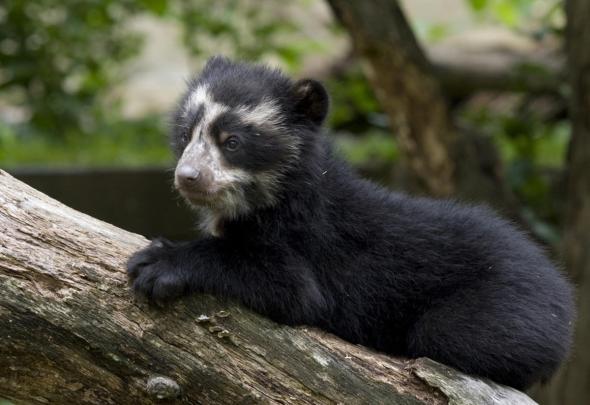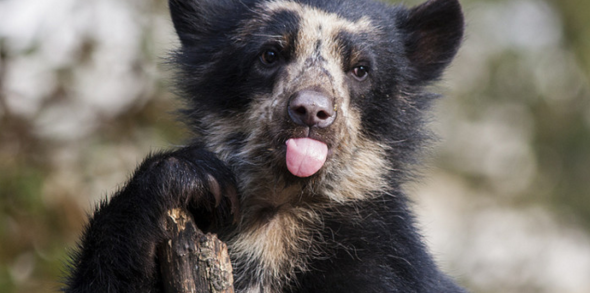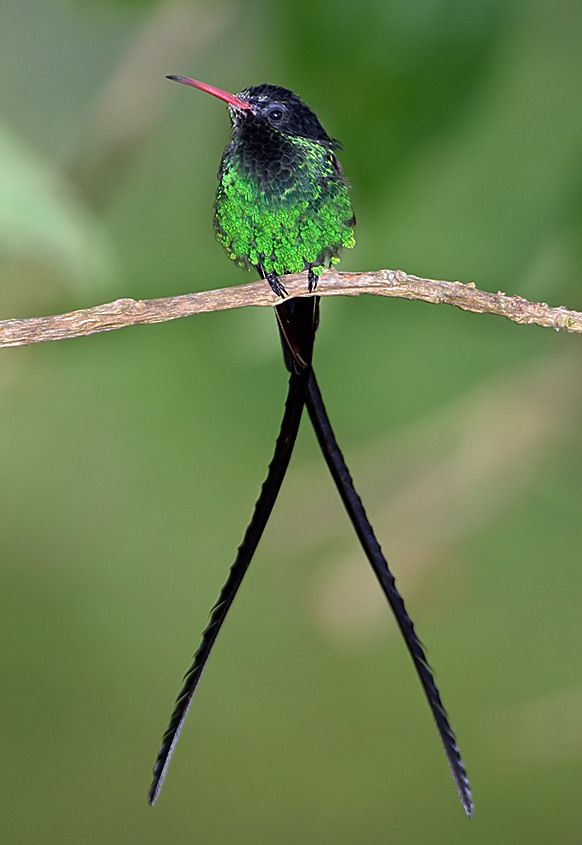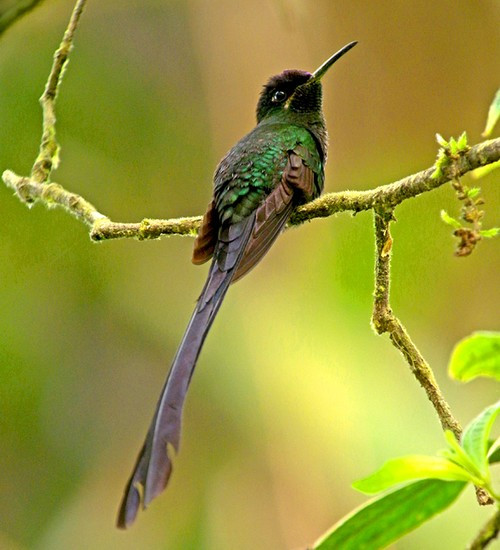Endangered Species Monday: Tremarctos ornatus
Endangered Species Monday: Tremarctos ornatus
This January’s (2016) Endangered Species Watch Post is dedicated to the Tremarctos ornatus, commonly known as the Andean Bear or Spectacled Bear. The species was identified by Dr Jean Léopold Nicolas Frédéric Cuvier back in 1825. Dr Jean Léopold Nicolas Frédéric Cuvier lived from (23 August 1769 – 13 May 1832), known as Georges Cuvier, was a French naturalist and zoologist, sometimes referred to as the “Father of paleontology”. Cuvier was a major figure in natural sciences research in the early 19th century and was instrumental in establishing the fields of comparative anatomy and paleontology through his work in comparing living animals with fossils.
From 1982 to 1996 the Andean Bear has been listed as (vulnerable), of which its main threats are habitat loss and major poaching for the animal parts trade. Within the past thirty years populations have declined by a staggering 30% which qualifies the bear as being listed as (vulnerable). Habitat loss continues at a rate of 2-4% per year, which as yet doesn’t look set to decline. Furthermore identified threats do not look set to decrease anytime soon which could see this stunning animal pushed into extinction very soon.
Poaching is one of the main problems that can be controlled if (anti poaching enforcement) is increased within the bears habitat, unfortunately this is easier said than done. Furthermore, continued habitat destruction and illegal logging will see forest tracks opened up within the bears natural habitat, thus allowing poachers to walk freely into the bears home environment, thus seeing poaching occur. Anti poaching enforcement is a must, and needs to be taken seriously by all international (non-governmental organisations) that are working to sustain this animals welfare, and habitat.
Endemic to Bolivia, Colombia; Ecuador; Peru, and Venezuela, populations of the Andean Bear are now known to be decreasing rapidly, however populations are not reported to be (fragmented). Back in 1998 it was estimated by Dr Peyton that there was a mere 20,000 Andean Bears remaining. A 2003 survey, however estimated that there was in between 5,000 to 30,000 Andean Bears remaining. Andean Bears are now commonly located within the eastern Andes of which bear populations exist from the snowline down to 300 m asl in the Tapo-Caparo National Park in Venezuela. Andean Bears can also be located at high altitudes in Ecuador, Peru, Bolivia, and Columbia.
Andean Bears are “omnivores”, meaning that they feed exclusively on plant matter, fruits, bark and occasionally will consume meat of other animals, the bears preferred diet though is reported to be species of flora from the Bromeliaceae and Arecaceae. Activity patterns range from strictly diurnal for wild bears in Bolivia to mixed diurnal and nocturnal for reintroduced bears in Ecuador.
“EXTINCTION BY 2030 IS POSSIBLE”
As food is available year-round in all parts of their range, Andean bears do not hibernate. Based on the first few individuals of this species to be monitored using ground telemetry in Bolivia and Ecuador, home ranges overlap to a high degree and minimum home range sizes vary from 10 to 160 km² (although these are underestimates, as the bears were regularly out of range of radiotelemetry in both studies).
The Andean Bear stands at around 5ft to 6ft tall, and weighs in at around 220, 330lbs. The markings on the Andean bear’s face, neck and chest are exactly like human finger prints (unique to each and every individual Andean Bear). Andean bears are very timid and shy and prefer to live in isolated cloud forests, of which they are “mainly nocturnal” however will at times feed, live and socialize in daylight (although this is considered rare). Favorite foods are cacti, berries and of course honey.
Andean bears are quite typically solitary animals, and will only be seen in pairs during mating season. Females normally give birth to (1-2 cubs), cubs are normally mobile after one month, however will remain with their “mother” for up to eight months, mothers will often be seen with little cub hitching a ride on the back on the mothers back. Population studies state today that there may be no fewer than 3,000 Andean bears in the wild., which if true could soon see the species nearing extinction by 2030.
ANDEAN BEAR THREATS
Habitat loss and fragmentation, poaching, and the lack of knowledge about the distribution and status of the Andean Bear are the principal threats to this species. Much of the range of the Andean Bear has been fragmented by human activities, largely resulting from the expansion of the agricultural frontier. In some areas, mining, road development and oil exploitation are becoming a greater menace to Andean Bear populations as well as to local communities, due to land expropriation, loss of habitat connectivity, and water and soil contamination.
Many Andean Bear populations are isolated in small to medium-sized patches of intact habitat, particularly in the northern part of the range. The situation tends to improve towards the southern range, with some large patches of wilderness still remaining. Nevertheless, human population growth and national development plans throughout the Tropical Andes continue to be an important cause of habitat fragmentation and to threaten the connectivity among remaining wilderness patches.
Poaching is a serious threat throughout the Andean Bear range. Bears are often killed after damaging crops, particularly maize, or after purportedly killing livestock. Also, Andean Bear products are used for medicinal or ritual purposes and at some localities Andean Bear meat is highly prized. Live bears are also sometimes captured and sold.
Human induced mortality endangers the viability of small remnant populations. Lack of knowledge about the distribution and status is a problem throughout the region. In many areas, information about the status of Andean bears is outdated or, particularly in the southern portion of the range, simply non-existent. The absence of knowledge makes it difficult to develop realistic management plans for the conservation of this species, or to monitor changes in its distribution (reflective of changes in population status).
It is without a doubt the Andean Bear is facing “imminent extinction”, and from studies that are being conducted by various organisations including the International Animal Rescue Foundation Brazil, its very likely this animal is going to be pushed into extinction very soon.
Thank you for reasding the first part of this years (2016) Endangered Species Watch Post, and please feel free to scroll through 2014-2015’s posts below via the automatic scroll new feed bar.
Dr Jose C. Depre PhD. MEnvSc. BSc(Hons) Botany, PhD(NeuroSci) D.V.M. Environmental & Human Science
Chief Environmental Officer and Director
Donate today and help us continue our worldwide anti-wildlife trade enforcement operation continuing. Please click the DONATE button below.
DONATE BUTTON
Endangered Species Monday: Hylonympha macrocerca
Endangered Species Monday: Hylonympha macrocerca
This Monday’s Endangered Species Post (ESP) watch I take a rare glimpse into the life of Hylonympha macrocerca, commonly known as the Scissor Tailed Hummingbird. Identified in 1873 by Dr John Gould FRS September 1804 – 3 February 1881) whom was an English ornithologist and bird artist. He published a number of monographs on birds, illustrated by plates that he produced with the assistance of his wife, Elizabeth Gould, and several other artists including Edward Lear, Henry Constantine Richter, Joseph Wolf and William Matthew Hart. He has been considered the father of bird study in Australia and the Gould League in Australia is named after him. His identification of the birds now nicknamed “Darwin’s finches” played a role in the inception of Darwin’s theory of evolution by natural selection. (Image: Scissor Tailed Hummingbird)
Listed as (endangered) this remarkable specimen was listed as threatened back in 1988. Since this time little conservation efforts have been seen to improve the species overall status within the wild of which extinction is incredibly likely. From 1994 to 1996 the species was listed as critically endangered. From the start of the Millennium conservation efforts did improve the wild status of the hummingbird to (vulnerable), unfortunately from 2008 to date the species has been re-listed as endangered again. From my own evaluations of the birds current threats and shrinking habitat, extinction will occur within the next five to ten years, unless conservation efforts improve, funding increases and dangers disperse soon.
Endemic to Venezuela and Bolivia evidence has shown that overall population sizes are decreasing very rapidly. The population trend when last evaluated back in 2012, showed around 10,000 to 19,900 ‘individuals’ within the wild. This equates to exactly 6,000 to 13,000 ‘mature individuals’ remaining, which is rounded to 6,000 to 15,000 ‘birds in total’. The Scissor Tailed Hummingbird specie inhabits lower and upper montane humid forest, where it has been recorded at 800-1,200 m on Cerro Humo, and 530-920 m further east.
In primary forest, the specie feeds mainly at bromeliad flowers and on their insect inhabitants, whereas in secondary forest, feeding is associated with the shrubs Heliconia aurea and Costus sp. Although it is regularly seen feeding on Heliconia in open areas it may nevertheless be dependent on the availability of pristine forest nearby. It also hawks insects from exposed perches. There may be seasonal movements.
Major Threats
Listed on Cites Appendix II (Convention on International Trade of Endangered Species wild flora and fauna), increases in cash-crop agriculture, especially the cultivation of “ocumo blanco” (Xanthosoma sagittifolium) and “ocumo chino” (Colocasia esculenta), since the mid- to late 1980s have resulted in some uncontrolled burning and forest degradation. Cerros Humo and Patao have been worst affected, with the east of the peninsula fairly undisturbed.
Since it is an understorey inhabitant, removal of understorey vegetation for coffee and cacao cultivation is likely to lead to reduced population density. It is considered nationally Endangered in Venezuela, and has been recognized as a “high priority” species, amongst the top dozen priorities for bird conservation in Venezuela.
Image: Scissor Tailed Hummingbird.
Occasionally the species is misidentified as the Red-billed streamertail which is also commonly known as the scissor-tail or scissors tail hummingbird. However its fairly easy to distinguish between the two when viewing online or within books. This particular species (in question) is not native to Jamaica, and one can quite easily differentiate between the two. The Scissor Tailed Hummingbird has obviously acquired its name due to its unique scissor tailed rump feathers, whereas the Jamaican Red-billed streamertail doesn’t host the same features but more as explained - streamer like rump feathers.
Sadly as explained due to increasing threats we will lose this bird unless conservation efforts improve dramatically and dangers subside. However this is unlikely to occur. The Scissor Tailed Hummingbird will be yet another species of bird added soon to the extinction list of amazing birds, that we humans have destroyed. The video below depicts a female Scissor Tailed Hummingbird within the Venezuela wild.
Thank you for reading.
Dr Jose C. Depre.
Environmental and Botanical Scientist.







